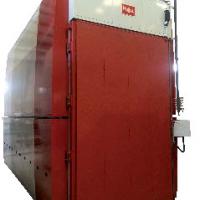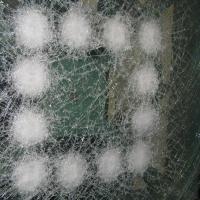Date: 24 May 2004
The International Code Council this week adopted new standards that limit the use of wired glass in all buildings, such as schools and gyms, where people could hurt themselves by running into it.The decision followed a national awareness and lobbying campaign led by Greg Abel, whose son was seriously injured when his arm pushed through wired glass, and state Sen.Vicki Walker, D-Eugene.
Walker, whom Abel had approached for help after his son's injury, said the two felt as though they had "slayed the dragon" by convincing the code council to strengthen its policy, despite objections by overseas companies that make wired glass.
"It was incredible. We took on a multibillion-dollar industry, and we won," she said. "Kids aren't going to get hurt by wired glass. They aren't going to be able to do that to kids anymore."
Abel and Walker began the push in Oregon but have made trips to Washington, D.C., to lobby Congress and federal regulators. This week, they traveled to Overland Park, Kan., where the council met to adopt the code change. The nonprofit council sets nationwide standards for building, fire, electrical and plumbing codes.
Wired glass has been used because the metal mesh between two layers of glass helps slow the progress of fire.
The International Code Council's new standards will effectively end what was supposed to be a temporary exemption from a 1977 code that limited the use of wired glass. The exemption was meant to provide time to develop alternatives that met fire safety standards. The temporary rules remained in place after manufacturers sued.
Alternatives have been available for at least a decade, Abel said, such as impact-safe glass reinforced with a clear layer of heat-resistant film.
Abel's son, Jerred, learned firsthand of the safety hazards of wired glass one day in 2001, when he was a student at the University of Oregon. He was leaving the UO student recreation center when he pushed open a door and his hand accidently punched through the wired glass. His arm plunged through, and the wire trapped the shattered shards against his limb, which was further injured when he withdrew it.
Greg Abel said his son, now 25, still bears the scars, as well as nerve damage and limited mobility in his arm.
After his son's injury, Abel enlisted Walker's help and formed Advocates for Safe Glass.
Through media coverage and his group's Web site, www.safeglass.org, Abel has drawn support and interest from across the country and internationally, particularly from others with children who had hurt themselves badly after breaking through wired glass.
Previously, Walker and Abel had successfully prodded the state Building Codes Division to eliminate the use of wired glass in hazardous locations subject to human impact in all public school and athletic facilities, effective last October. Oregon also limited the use of wired glass in other buildings, in separate rules that take effect this October.
Asked if the newly adopted national standards means he can set his safety campaign aside, Abel responded: "No. But we can take a breath."
Since the code change applies only to future construction, Abel said, he and Walker plan to continue working with Congress and the National Consumer Product Safety Commission to ensure that facilities that already have wired glass in places where people can get hurt have it removed or retrofitted.


















Add new comment